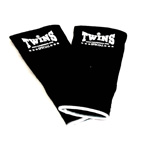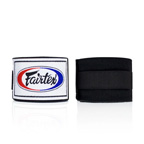
- Date: Friday, March 22, 2024
- Categories: Fitness, Strength, Training
Muay Thai, often referred to as "The Art of Eight Limbs," is a striking martial art that utilizes fists, elbows, knees, and shins in a symphony of powerful and precise movements. As fighters aim to increase their speed, power, and endurance, plyometric training emerges as a crucial component in honing these lethal skills. This article delves into the significance of plyometrics for Muay Thai practitioners, exploring how these exercises enhance athletic performance, improve functional strength, and contribute to a fighter's overall success in the ring.
Understanding Plyometrics
Plyometrics, or plyos, involve explosive, high-velocity movements designed to increase muscular power. This form of training focuses on stretching the muscles before quickly contracting them, a process known as the stretch-shortening cycle. Plyometric exercises leverage this cycle to improve the efficiency and speed of the muscle contractions, leading to enhanced performance in activities requiring power and speed.
Boosting Explosive Power
Muay Thai demands explosive power for strikes, kicks, and defensive movements. Plyometric training directly targets the development of this power. Exercises like jump squats, box jumps, and lunge jumps increase the force and speed of muscle contractions. This enhanced muscular power translates into more potent strikes and quicker movements in the ring, giving fighters an edge over their opponents.
Enhancing Speed and Agility
Speed and agility are paramount in Muay Thai, allowing fighters to evade attacks and deliver swift counter-strikes. Plyometrics improve neuromuscular coordination, reducing the time it takes for the brain to send signals to the muscles. This results in faster reaction times and movements. Drills that emphasize rapid direction changes and quick footwork, such as lateral jumps and agility ladder routines, are particularly effective in enhancing a fighter's speed and agility.
Increasing Endurance and Stamina
Muay Thai matches are grueling, requiring fighters to maintain high levels of performance throughout the bout. Plyometric training, with its high-intensity, short-duration exercises, improves cardiovascular health and muscular endurance. This conditioning allows fighters to sustain their power and speed over longer periods, which can be decisive in the later rounds of a match.
Improving Functional Strength
The dynamic movements in plyometric exercises mimic the complex, multi-directional actions found in Muay Thai. This specificity makes plyometrics exceptionally effective in building functional strength – the type of strength that directly translates to better performance in the sport. By engaging multiple muscle groups and joints in exercises that reflect fighting movements, plyometrics ensure that strength gains are not just measurable in the gym but are evident in the ring.
Enhancing Flexibility and Range of Motion
While not often highlighted, plyometric training can also contribute to a fighter's flexibility and range of motion. The explosive movements require stretching and contracting muscles through a wide range of motion, which can help improve flexibility. This increased flexibility enhances a fighter's ability to perform high kicks, deep stances, and intricate maneuvers without the risk of injury.
Preventing Injuries
Plyometric exercises strengthen the muscles, tendons, and ligaments, making them more resilient to the stresses of combat sports. This resilience is crucial in a sport like Muay Thai, where repetitive impact and intense training sessions are the norms. By incorporating plyometrics into their training, fighters can reduce the risk of injuries, ensuring that they can train consistently and compete effectively.
Plyometrics for Muay Thai: Practical Applications
To integrate plyometrics into Muay Thai training effectively, fighters should focus on exercises that target the lower body, core, and upper body, reflecting the sport's comprehensive physical demands. Some practical plyometric exercises for Muay Thai fighters include:
- Jump Squats: Enhances lower body power for more explosive kicks and improved maneuverability.
- Burpees with Push-Ups: Increases overall conditioning, upper body strength, and mimics the up-and-down movement in the ring.
- Medicine Ball Slams: Builds core and upper body explosive strength, crucial for clinching and striking.
- Lateral Hops: Improves lateral movement and agility, essential for dodging attacks and counter-striking.
Incorporating Plyometrics into Training
When adding plyometrics to a Muay Thai training regimen, progression and safety are key. Beginners should start with lower-intensity plyometric exercises, focusing on technique before moving on to more complex and intense drills. It's also crucial to include adequate rest and recovery, as plyometric training is demanding on the body.
Conclusion
Plyometric training offers Muay Thai fighters a competitive advantage, enhancing explosive power, speed, agility, endurance, and functional strength. By carefully incorporating plyometric exercises into their training routines, fighters can elevate their performance, reduce the risk of injury, and achieve greater success in the ring. Whether you're a seasoned fighter or a newcomer to the sport, integrating plyometrics into your training can unlock new levels of athletic prowess in the ancient and revered art of Muay







